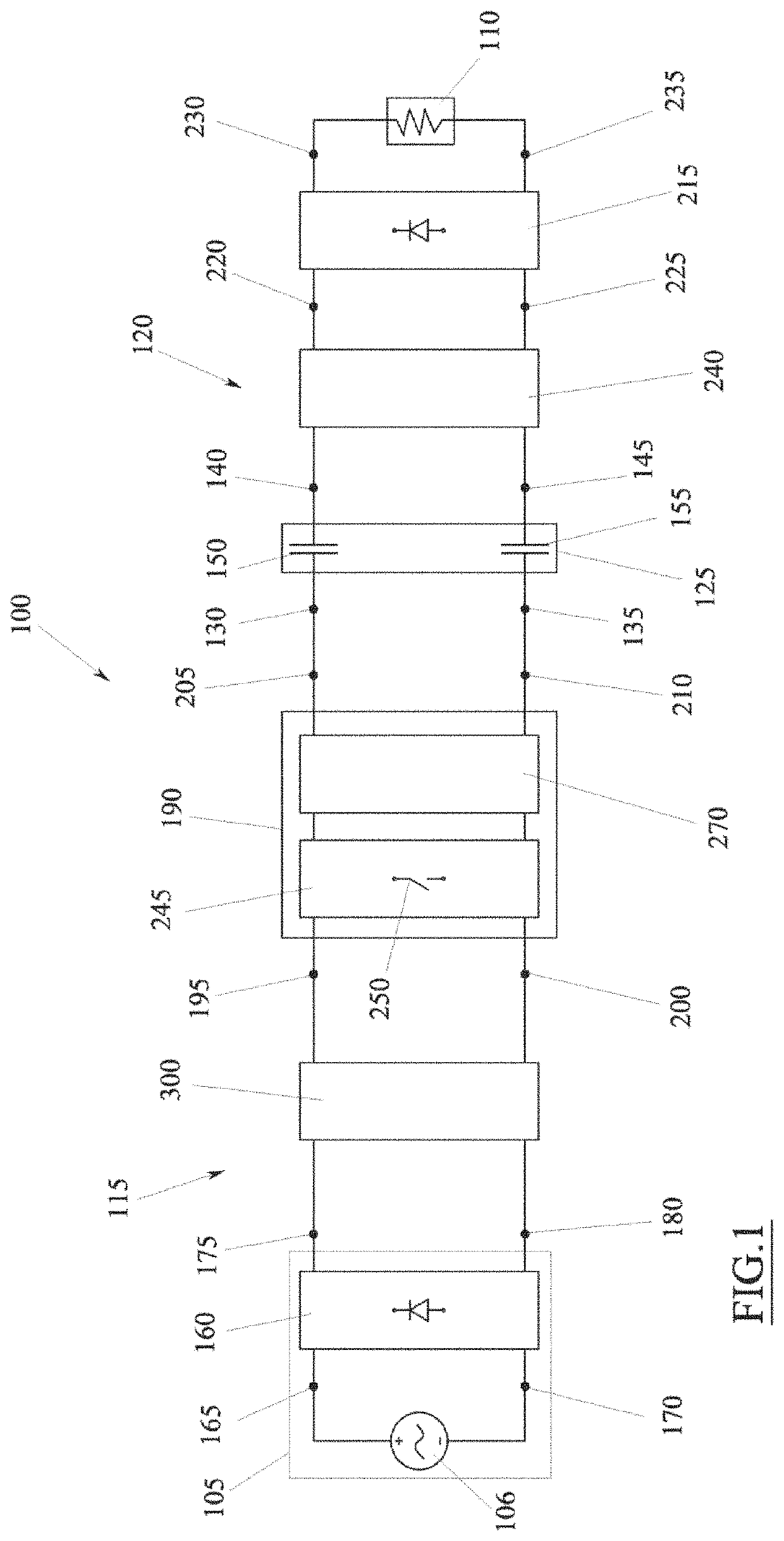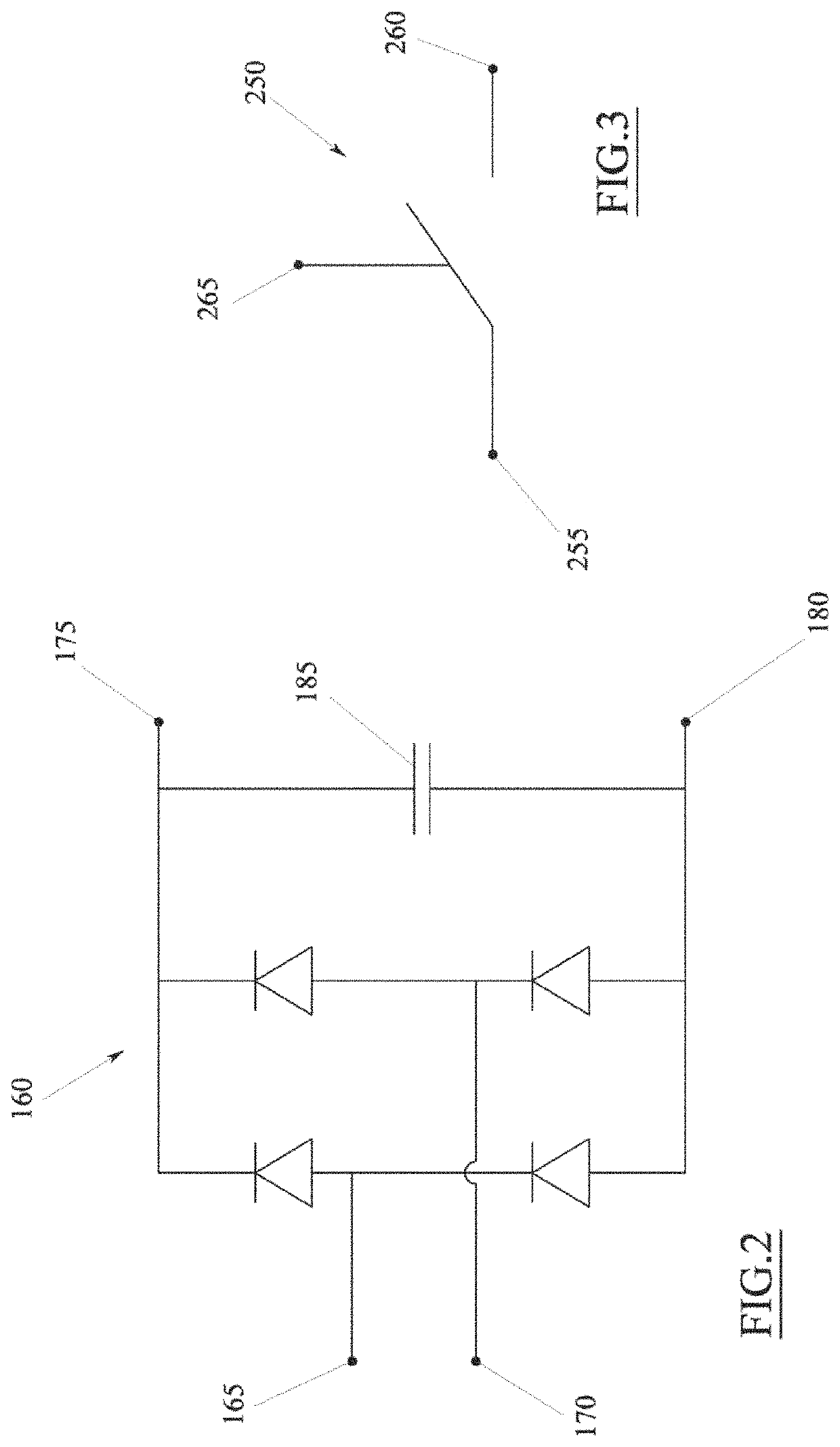Apparatus for transferring electrical power to an electrical load with converter
a technology of electrical power transfer and converter, which is applied in the direction of dc-dc conversion, power conversion systems, instruments, etc., can solve the problems of low power transfer efficiency, and inability to meet the voltage requirements of converters, etc., and achieves the effect of reducing the number of active switches and reducing the number of transformers
- Summary
- Abstract
- Description
- Claims
- Application Information
AI Technical Summary
Benefits of technology
Problems solved by technology
Method used
Image
Examples
Embodiment Construction
[0117]An embodiment of the present invention provides an apparatus 100 for transferring electrical power from an electrical source 105 to an electrical load 110.
[0118]The electrical source 105 is generally a source of direct voltage or comparable to a direct voltage.
[0119]In accordance with the illustrated example, the electrical source 105 can comprise a rectifier, globally indicated with 160, which is adapted for receiving in input an alternating voltage coming from a source of alternating voltage 106, for example a common electrical distribution network, for converting (rectifying) said alternating voltage into a direct voltage (or comparable to a direct voltage) and for outputting said direct voltage.
[0120]The source of alternating voltage 106 can be adapted for supplying an alternating voltage of variable value depending on the country or the use (e.g. industrial or domestic).
[0121]Purely as an example, the source of alternating voltage 106 can be a 50-60 Hz, 90-250V AC network...
PUM
 Login to View More
Login to View More Abstract
Description
Claims
Application Information
 Login to View More
Login to View More - R&D
- Intellectual Property
- Life Sciences
- Materials
- Tech Scout
- Unparalleled Data Quality
- Higher Quality Content
- 60% Fewer Hallucinations
Browse by: Latest US Patents, China's latest patents, Technical Efficacy Thesaurus, Application Domain, Technology Topic, Popular Technical Reports.
© 2025 PatSnap. All rights reserved.Legal|Privacy policy|Modern Slavery Act Transparency Statement|Sitemap|About US| Contact US: help@patsnap.com



